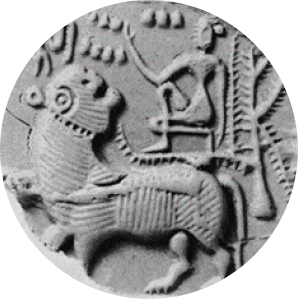If peace ever comes to the Middle East it will be because certain people, who should have known better, have put aside their accumulated skepticism, suspended their disbelief for a time, and taken the plunge. And after peace is here, most serious, committed activists will say, “What this is peace? Nah! This is nothing like peace”, and proceed to enumerate all the missing components of “real” peace and what further sacrifices still have to be made to get there. But a relative peace will have arrived in the Middle East – it’s just that most of us refuse to admit it at the time.
Well that’s one possibility, another can be found in Tony Klug’s interesting article “How Peace Broke Out in the Middle East”
One thing for sure is that peace will need to be made by Israelis and Palestinians themselves, and the big question is how much well-meaning people and organizations from around the world can help them to reach it. This week American film director David Lynch was in Jerusalem promoting Transcendental Meditation as the answer, with an embarrassed Pres. Shimon Peres listening on.
Mr. Lynch, if there’s one thing I don’t want in my morning meditation, it’s worries about Middle East peace.
And then there was the One Voice or Million Voices for Peace campaign, with its canceled concerts. The latter was interesting and instructive – something that all future well-meaning organizations will need to study if they really want to succeed here. Unfortunately, there seem to be different versions. An article in Haaretz. Peace concert in Jericho called off over security concerns quoted one of the organizers: “”Extremist ideologists have threatened our participants in Jericho, and we felt it is our responsibility not to play with their lives, he said, but did not provide details about the threats.” It seems that later the planned Tel Aviv concert also was canceled when some of the artists dropped out.
That’s one version of the events. The other was expressed in a press release-> by the PACBI (The Palestinian Campaign for the Academic and Cultural Boycott of Israel): “Facts about the Cancellation of the Jericho-Tel Aviv Normalization Event”. The PACBI claims victory for getting the event cancelled: “A solid partnership between diverse civil society organizations in the Occupied Palestinian Territory has succeeded in thwarting the event’s organizers’ attempt to mislead public opinion and to use deceptive slogans to market a political program that concedes some fundamental Palestinian rights.”
If, as I once found, the press release disappears from the PACBI web site, it can also be found here on the ISM website.
There is even a Palestinian organization, Another Voice, which was specifically set up to counter the efforts of One Voice. They planned an alternative concert for today in Ramallah (no idea whether it’s still on). They also issued a press release following the Jericho concert cancellation, “ONEVOICE CONCERT CANCELLED DUE TO GRASSROOTS MOBILIZATION” which can be found on the website of the International Solidarity Movement.
The Palestinian opponents of One Voice have explained, from their side, what is wrong with the movement. One of the objections was that those attending the concert would be expected to sign the (fairly innocuous) One Voice petition, which states:
“To our leaders, our fellow citizens, our neighbors, and the world:
We demand in one voice that our elected representatives work to achieve the following demands:
– Recognize the right of both peoples to independence, sovereignty, freedom, justice, dignity, respect, national security, personal safety, and economic viability;
– Implement concrete confidence-building measures that will improve the lives of the Palestinian and Israeli people, including ensuring freedom of movement for ordinary civilians and fostering education against incitement on both sides.
– Immediately commence uninterrupted negotiations until reaching an agreement, no later than October 18, 2008, for a Two-State Solution, fulfilling the consistent will of the overwhelming majority of both populations.”
The Palestinian opponents talk about a hidden agenda by the organizers, which hasn’t been made public: “We are discovering that many Palestinians and Israelis have signed on without access to the 10 pillars or proper understanding of the OneVoice initiative.” (from the Another Voice website).
If there is such a hidden agenda, does it actually matter?
Right-leaning Jews also found plenty to object to regarding One Voice, as can be seen from an article by Arthur Kohn (yet another meddlesome film director) in the Jerusalem Post, “Discordant Reality v. One Voice” . I managed to sympathize with at least the first paragraph of his article:
“Again and again, private organizations appear on the scene promoting agendas designed to advance peace in the Middle East. In many cases, their intentions may be good; unfortunately, however, they generally lack a minimal understanding of the situation, and their programs and proposals are based on mistaken assumptions. As a result, their contribution to an easing of the prevailing tensions between Israel and the Palestinian Arabs is of little or no value.”
As is usually the case, when we read the rest of the article, it becomes clear that the writer’s own “understanding of the situation” turns out to be decidedly quirky and one-sided.
So to sum up, a well-meaning (be-safek) group comes along to try to advance “peace” (yaaani) which conversely ends up upsetting Palestinians and Israeli Jews (though maybe not equally). This probably does not mean that the Middle East should be left alone to stew in its own juices.
